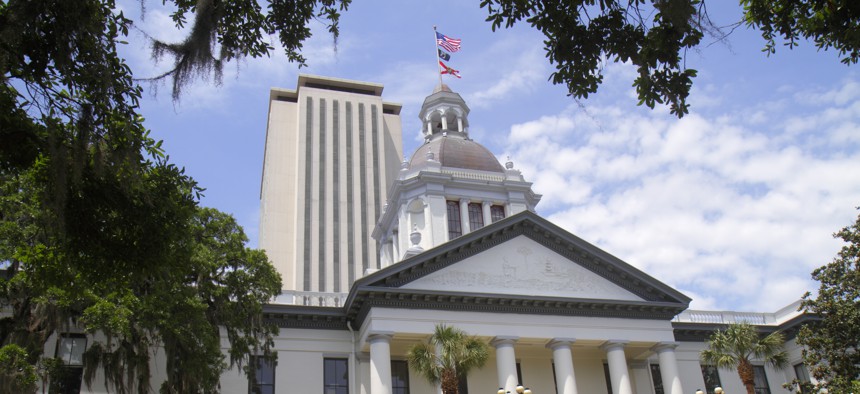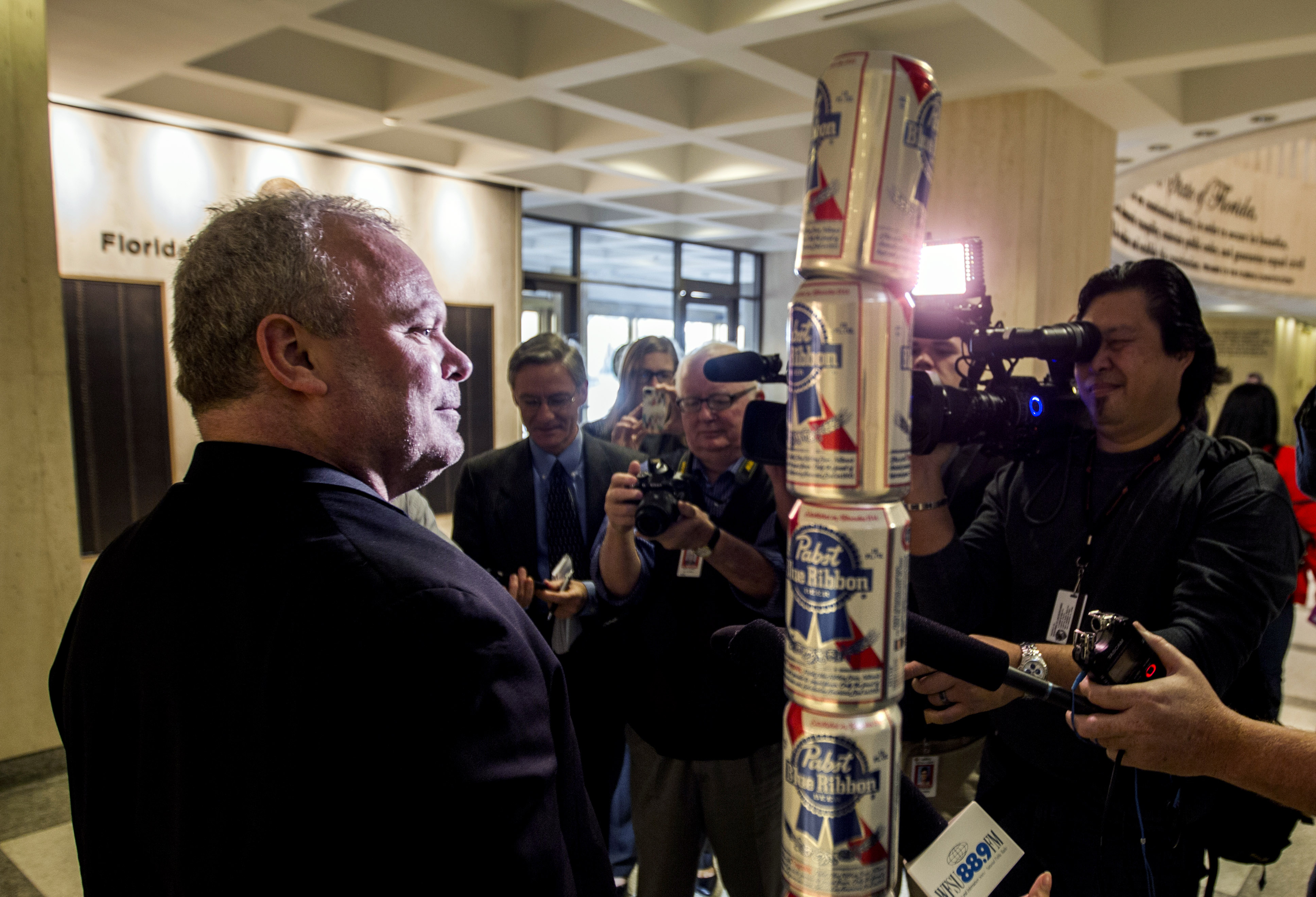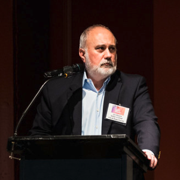Lights out: DeSantis administration clamps down on colored lights at Florida's old Capitol
New rules also may curtail protests, ban ‘indecent’ displays

The exterior of the Florida State Capitol. Jeffrey Greenberg/Universal Images Group via Getty Images
A year after a colored light kerfuffle at the old Capitol, Gov. Ron DeSantis’ administration is pushing a set of new rules for the Capitol Complex, including giving the governor sole authority to light building exteriors.
Other proposed rules, which were announced in the Florida Administrative Register by the Department of Management Services and provided through a public records request, would:
* Limit or prohibit protests of other demonstrations inside state buildings if they’re deemed a “disturbance.”
* Ban “visual displays, sounds, and other actions that are indecent, including gratuitous violence, gore, and material that arouses prurient interests” on state property.
* Allow “Capitol Police (where the Capitol Complex is involved)” to remove people for trespassing for violating the rule.
The language proposed by DMS, the state’s real estate manager, says “lighting the Historic Capitol in various colors to communicate a message of support for a cause or event or to celebrate a holiday or other important date is reserved for government speech only.” The “government speech” doctrine “recognizes that a government entity ‘is entitled to say what it wishes,’” according to the Legal Information Institute.
It also says the governor “may direct” that the old Capitol be lit and that legislative leaders can ask in writing to do so. And “those reserving the steps or other surrounding property of the Historic Capitol may not cause the building to be lit to communicate a message or to support a cause or event.”

Asked for comment, a DMS spokesperson this week said the agency “routinely examines all of its rules in accordance with Florida Law. This rule is being updated as part of the DMS annual regulatory plan to clarify procedures and requirements for public use of the Capitol.”
Last June, gun control advocates said the state blocked the lighting of the old Capitol in orange to honor gun violence victims, according to the Tallahassee Democrat.
Moms Demand Action, an offshoot of Everytown for Gun Safety, "a gun control advocacy nonprofit formed in the wake of the Sandy Hook Elementary School shooting,” had asked Florida Agriculture Commissioner Nikki Fried to make the Capitol lighting request with DMS, the newspaper reported. The group’s representatives said the request was ignored.
Moreover, around the same time rainbow lighting was temporarily turned off for Jacksonville's Acosta Bridge and a request by Sarasota officials to light the Ringling Bridge in rainbow colors was turned down. A spokeswoman for the governor told news media the office was not involved in either decision.
"I think they're just doing it based on code. I don't think they're getting involved in any messaging on that," DeSantis told reporters at the time, referring to local and state officials. A request for comment, made last week, on the latest proposed rulemaking is still pending with the governor’s office.
Earlier this year, the old Capitol was bathed in purple light for Alzheimer’s awareness. It’s an annual lighting ceremony sponsored by the Alzheimer’s Association and livestreamed on Facebook, Twitter and YouTube.
Fried, in a statement to City & State on Tuesday, said the new rules are “Gov. DeSantis restricting speech, which is ironic since he constantly refers to the free state of Florida.”
She added: “If he doesn't want government buildings lit orange to commemorate the anniversary of the Parkland shootings, or rainbow colors for Pride, he should have the courage to say so.”

Capitol restrictions began in earnest in 2013 under Gov. Rick Scott after a month-long sit-in by members of the Dream Defenders activist group. They wanted a special session to revisit the state’s “Stand Your Ground” law after George Zimmerman was acquitted in the February 2012 shooting death of 17-year-old Trayvon Martin in Seminole County.
The sit-in morphed into a “round-the-clock protest,” as Florida Politics reported, that attracted civil rights leaders Jesse Jackson and Julian Bond, actor and singer Harry Belafonte and rapper Talib Kweli.
It “forced the state to change its policies on protests inside the Capitol, including no further overnight stays, prohibiting food preparation in the building without prior approval, and requiring members of the public to vacate the premises 30 minutes after the end of any official meeting that runs late,” the website reported.

In 2014, state officials clamped down on holiday displays in the Capitol rotunda after a woman vandalized a Satanic Temple display, described as “a diorama of Lucifer falling into the flames of hell.” Other notable displays in recent years include a Festivus pole made of empty Pabst Blue Ribbon beer cans.
And after more than 100 supporters and opponents of an alimony overhaul bill jammed the governor’s office reception area in 2016, Scott also closed off the waiting room, installing a desk and gate just inside the hallway door.
A previous version of this story appeared in “First Read,” City & State Florida’s morning newsletter. Contact Jim Rosica at jrosica@cityandstatefl.com and follow him on Twitter: @JimRosicaFL.
NEXT STORY: After Ian: Five Questions for CFO Jimmy Patronis on electric vehicle fires
